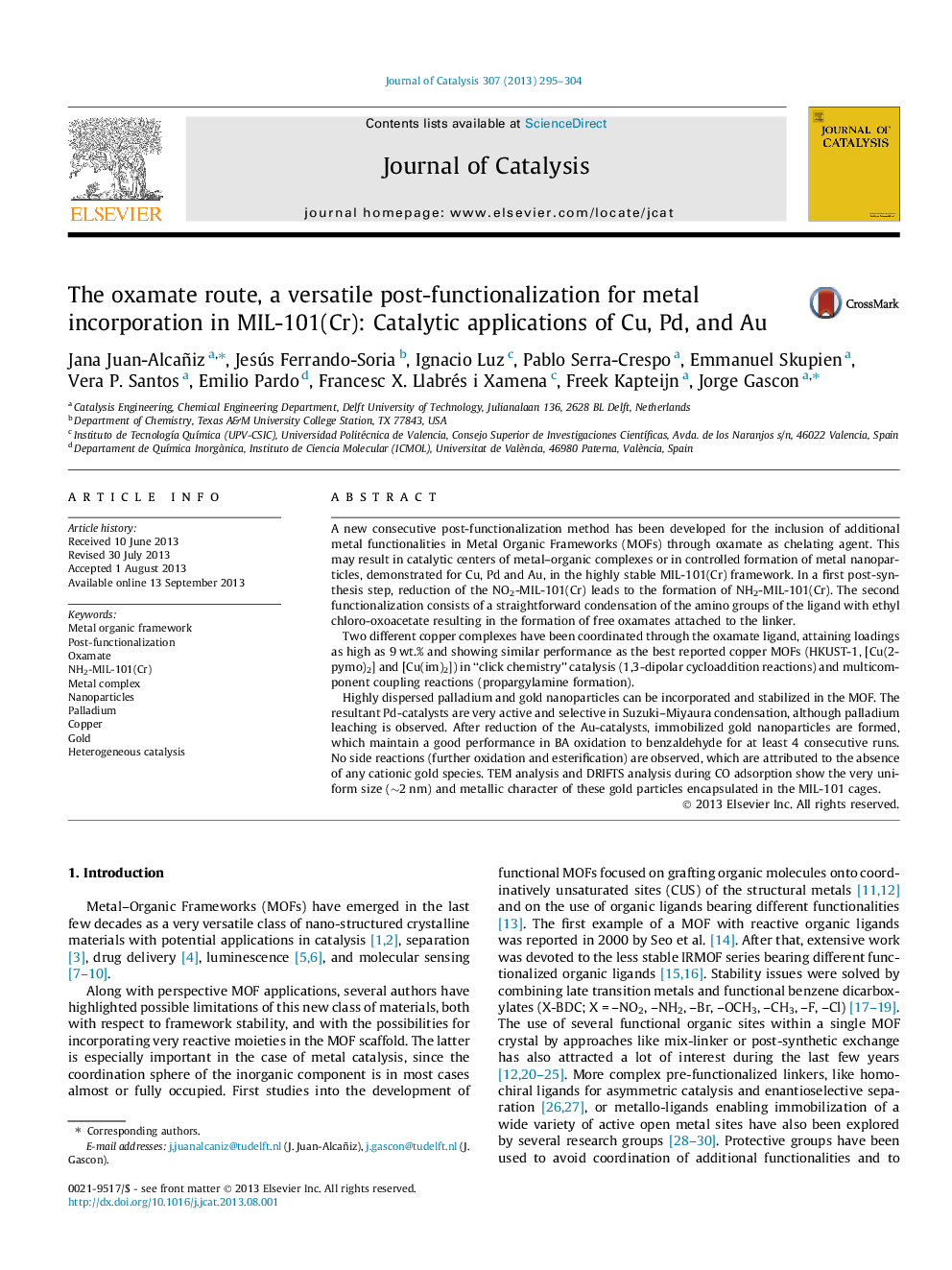| کد مقاله | کد نشریه | سال انتشار | مقاله انگلیسی | نسخه تمام متن |
|---|---|---|---|---|
| 61172 | 47567 | 2013 | 10 صفحه PDF | دانلود رایگان |

• New consecutive post-functionalization method for the coordination of catalytically active metals in MOFs.
• High Cu loadings can be achieved with high activity in click chemistry catalysis.
• Immobilized gold nanoparticles, very uniform size, ∼2 nm, can be encapsulated in MIL-101(Cr).
• Stability in benzyl alcohol oxidation is superior to Au/Al2O3 commercial catalyst.
A new consecutive post-functionalization method has been developed for the inclusion of additional metal functionalities in Metal Organic Frameworks (MOFs) through oxamate as chelating agent. This may result in catalytic centers of metal–organic complexes or in controlled formation of metal nanoparticles, demonstrated for Cu, Pd and Au, in the highly stable MIL-101(Cr) framework. In a first post-synthesis step, reduction of the NO2-MIL-101(Cr) leads to the formation of NH2-MIL-101(Cr). The second functionalization consists of a straightforward condensation of the amino groups of the ligand with ethyl chloro-oxoacetate resulting in the formation of free oxamates attached to the linker.Two different copper complexes have been coordinated through the oxamate ligand, attaining loadings as high as 9 wt.% and showing similar performance as the best reported copper MOFs (HKUST-1, [Cu(2-pymo)2] and [Cu(im)2]) in “click chemistry” catalysis (1,3-dipolar cycloaddition reactions) and multicomponent coupling reactions (propargylamine formation).Highly dispersed palladium and gold nanoparticles can be incorporated and stabilized in the MOF. The resultant Pd-catalysts are very active and selective in Suzuki–Miyaura condensation, although palladium leaching is observed. After reduction of the Au-catalysts, immobilized gold nanoparticles are formed, which maintain a good performance in BA oxidation to benzaldehyde for at least 4 consecutive runs. No side reactions (further oxidation and esterification) are observed, which are attributed to the absence of any cationic gold species. TEM analysis and DRIFTS analysis during CO adsorption show the very uniform size (∼2 nm) and metallic character of these gold particles encapsulated in the MIL-101 cages.
A consecutive post-functionalization method for the inclusion of additional metal functionalities in Metal Organic Frameworks through oxamate as chelating agent is introduced. Highly dispersed and active Cu complexes and Au nanoparticles can be created inside the pores of MIL-101(Cr)Figure optionsDownload high-quality image (81 K)Download as PowerPoint slide
Journal: Journal of Catalysis - Volume 307, November 2013, Pages 295–304